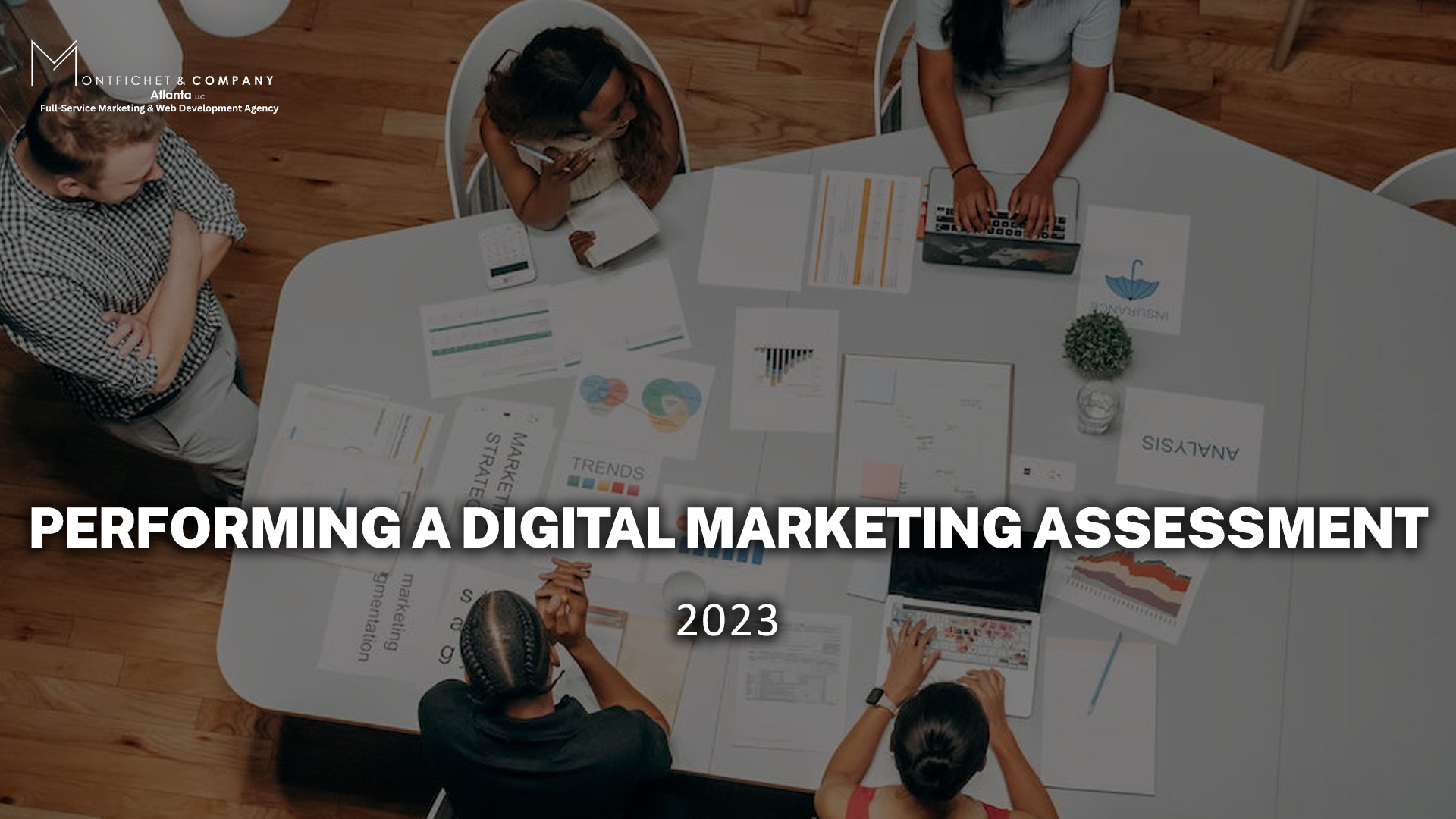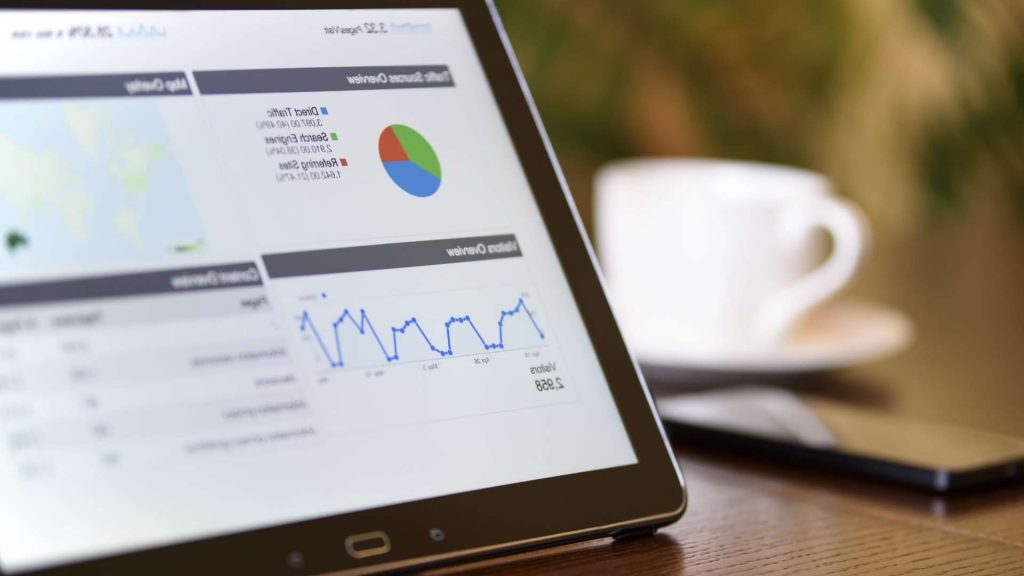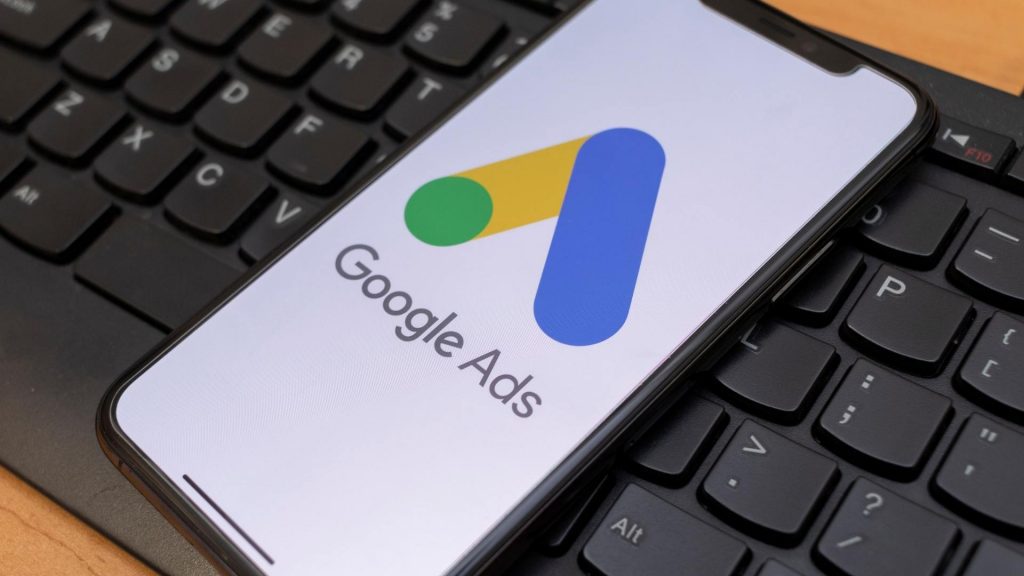Performing a Digital Marketing Assessment 2023
A digital marketing assessment is a comprehensive review of your organization’s current online presence, including its website, social media accounts, SEO performance, and more. It helps you identify areas where your digital strategies are succeeding and where they may need improvement.
The assessment begins with an analysis of your existing digital assets. This includes looking into demographic information about visitors to your website or social media accounts, analyzing the effectiveness of your content strategy, and tracking engagement levels on each platform. From there, strategic recommendations can be made on how to improve your digital presence for maximum reach and impact.
Once the assessment is complete, you’ll have a better understanding of what works in your digital realm—and what doesn’t. You’ll be able to make informed decisions about how to best use your resources to reach and engage your target audience. By understanding the strengths and weaknesses of your current digital marketing strategy, you can make more effective decisions moving forward.
Assessments are an important part of modern business, as they help you ensure that your online presence is working hard for you. Taking advantage of this resource could mean the difference between a successful campaign and one that falls flat. With a comprehensive assessment, you can get on the path toward reaching and engaging your ideal customer in the most effective way possible.

Digital Assets
The assessment typically covers a wide range of topics, such as search engine optimization (SEO), content marketing, social media, website analytics, landing page design, and more. It also looks at the overall performance of an organization’s digital marketing activities and offers recommendations for improvement.
The assessment is designed to provide a thorough understanding of the current state of an organization’s marketing strategy in order to create better results from future efforts. Additionally, it can help identify potential areas of opportunity that could be beneficial for growth.
Finally, it serves as a valuable tool for identifying any gaps or weaknesses that may need to be addressed before further progress is made. Overall, this type of assessment helps organizations improve their ability to reach their goals and gain a better return on their investment.
- Websites
- Landing pages
- Social media accounts
- Blogs and other content assets
- Email campaigns
- Digital ads
- Online reviews
- SEO optimization efforts
- Analytics tools
- Conversion rates
- Lead generation activities
- Overall brand presence online
- Digital marketing strategy and effectiveness.
The marketing assessment can help an organization identify strengths and weaknesses in its current efforts, create a more effective plan for the future, and provide insights on how to better reach its target audience. It also allows companies to make informed decisions about which tactics are working and which need improvement. Ultimately, this type of assessment offers invaluable information that can be used to develop an effective strategy that will lead to more successful outcomes.

Website visitor demographics
The website visitor demographics are an important part of a marketing assessment. It’s important to understand who your website visitors are and how they interact with your site in order to optimize the experience for each individual user.
By looking at data such as age, gender, location, device type, referral source, and other metrics, you can get valuable insights into website usage trends and tailor content accordingly. Additionally, understanding visitor demographics helps marketers target their campaigns more effectively and measure the success of online advertising efforts.
Having this information readily available allows businesses to make informed decisions when developing strategies and maximizing ROI on digital campaigns. By identifying what works best for which audience, companies can better allocate resources to ensure maximum reach and engagement with potential customers. Understanding the who behind the web traffic is essential to any successful digital marketing assessment.
Search Engine Optimization (SEO)
SEO is also a vital part of a marketing assessment. Knowing which keywords are driving the highest number of searches, as well as understanding the different search engine algorithms and strategies used by competitors, can be invaluable for optimizing your website content and increasing visibility in organic search results. It’s important to analyze search query data to understand what people are searching for, so you can create targeted content that meets those needs.
SEO analysis should include an evaluation of the current website structure and navigation, as well as performance metrics such as page loading speed, mobile usability, and more. By taking into account all these elements, businesses can ensure they have a strong SEO foundation and can develop an effective strategy to reach their goals.

Social Media Presence
Understanding your presence on social media is also a key part of any marketing assessment. It’s essential to analyze metrics such as post engagement, follower growth, content performance, and more in order to understand how users interact with your brand on different platforms.
Additionally, analyzing the demographic information of followers across social networks can help inform advertising campaigns and tailor content for specific audiences. By exploring what type of content resonates best with each platform, businesses can increase their reach and drive more leads through organic or paid social promotion strategies. Analyzing these metrics provides valuable insights into customer behavior which allows companies to create more targeted campaigns that yield better results.
All of these components are essential for a successful marketing assessment and should be taken into consideration when developing strategies to maximize ROI on campaigns. By analyzing website visitor demographics, SEO performance metrics, and social media presence, businesses can ensure they are creating content that appeals to their target audience and reaches them in the right places. With the right data and insight, companies can create targeted campaigns that drive more leads and sales.
By understanding your visitors’ needs and behavior, you can develop an effective strategy to reach your business goals. It’s important to measure website performance regularly in order to optimize content for maximum engagement, analyze search engine algorithms to make sure your site is visible online, understand your followers on social media, and more. With the right analysis, businesses can make informed decisions when creating campaigns that are tailored to their target audience and drive leads for maximum ROI.
The insights gained from a marketing assessment are essential for any successful business looking to optimize its online presence and grow in today’s competitive landscape. By having this understanding of website visitors, SEO performance metrics, and social media presence, companies can ensure they are reaching their target audiences with relevant content in the most effective way possible. This data-driven approach allows businesses to maximize ROI on digital campaigns and get one step closer to achieving their goals.
Content Strategy
A marketing assessment will provide you with an analysis of the effectiveness of your content strategy. It is important to assess how well your content is performing in order to optimize delivery and make sure that it resonates with your target audience.
The digital marketing assessment will cover various elements, such as the quality of the content, its relevance, and user engagement data. Metrics like website traffic and lead generation can be used to measure the success of a content strategy.
Additionally, surveys or focus groups can be conducted to gather feedback from users about their experience with your content campaigns. By doing this assessment, you will be able to identify areas for improvement and determine which strategies are working best for you. As a result, this will help you create more effective campaigns in the future and increase your ROI.
The digital marketing assessment allows you to assess your content strategy and determine what areas need improvement. It helps you identify key areas of focus, such as customer segmentation, target audience identification, content optimization, and more.
By assessing these aspects of your strategy, you can better understand how to improve your content performance and maximize results. Additionally, the assessment provides insights into emerging trends that may be beneficial for you to consider when developing future campaigns or strategies.
The digital marketing assessment offers actionable recommendations on how to optimize existing campaigns and create new ones that meet customer needs and drive desired outcomes. With an improved understanding of the digital landscape and access to reliable data-driven insights, businesses can ensure their content is always delivering maximum value.
By conducting a digital marketing assessment, businesses can gain valuable insights into their content strategy that they can use to drive their overall success. Through an analysis of your current efforts and an understanding of the market landscape, you can develop a more effective content strategy that focuses on what works best for your business goals. With an improved understanding of customer needs and the right tactics in place, you can improve ROI and ensure that your content is always providing maximum value.
Whether it’s developing new campaigns or optimizing existing ones, conducting a digital marketing assessment helps businesses make informed decisions about how to maximize the effectiveness of their digital marketing activities. With this knowledge in hand, companies can put strategies in place that will help them achieve greater success.
By improving customer segmentation, targeting the right audience, and focusing on content optimization, businesses can create powerful campaigns that drive results. With an improved understanding of the digital landscape, businesses can make better decisions that will lead to increased ROI and even more success in the future.

Digital Marketing Strategy
Digital marketing assessment is a critical step for any business that wants to maximize its online presence and customer engagement. It involves evaluating your existing strategy, including its strengths and weaknesses, in order to identify areas of improvement and potential opportunities.
When conducting a digital marketing assessment, it’s important to consider the following:
- What channels are you currently using to engage with customers? How effective are they?
- Are there any new or emerging marketing trends that could benefit your business?
- Are your organic and paid strategies working together effectively? Is there room for optimization?
- How do you measure success and track performance across channels?
- Are there any gaps in your current digital strategy that can be filled?
An effective digital marketing assessment understands your business and customer needs, identifies potential opportunities for improvement, and recommends changes to help you meet your goals. When done correctly, it can help you maximize engagement with customers and achieve maximum results from your online presence.
With the right approach, a comprehensive digital marketing assessment can lead to increased customer engagement and better ROI for your business. It’s important to stay up-to-date on trends in order to identify areas of potential growth, as well as any threats or challenges that may arise in the future. By having an effective plan in place, you’ll be able to ensure that your digital strategy is working at its full potential.

Is my Strategy Working?
When it comes to the assessment of the success of your marketing strategy, there are several key factors that need to be taken into consideration. First and foremost, you should assess your current online presence by considering the reach of your website, social media channels, search engine optimization (SEO) efforts, email campaigns, and other digital channels used to drive traffic to your website or promote products/services.
You then need to take a deep dive into understanding how effective each channel has been in terms of generating leads for the business. This includes looking at engagement metrics such as click-through rates (CTR), conversion rates, and cost per lead (CPL). Additionally, you should also analyze data from sources such as Google Analytics or any other third-party analytics tools to gain further insights into the performance of your marketing strategy.
Another important step in the digital marketing assessment process is to compare your current online presence with that of your competitors. This allows you to identify areas where they are outperforming you and also gives you an indication of the strategies they are using that could be adapted for use on your own website or platforms.
Finally, it’s important to evaluate what changes need to be made in order for you to improve your overall digital marketing performance. This may include updating existing channels or creating new ones, implementing more targeted campaigns, or refining content strategies according to audience preferences.
By carrying out a comprehensive assessment of your current marketing strategy and continuing this process over time, you can ensure that your efforts are making an impact and driving results for your business.
About Montfichet & Company
Atlanta Our team of experts at Montfichet & Company – Atlanta can not only build your business website, but we can manage the process while allowing you to work in your business. We provide Industry research & market analysis to provide efficient content for the Website. We also partner with our sister company, The Trusted Automation, to help business owners or aspiring business owners and innovators obtain the training need to push to deliver exceptional results.
If you found this article beneficial, feel free to leave a comment below. We are located at 3343 Peachtree Road Ste. 180-581 in Atlanta, Georgia. You can also email our team of experts directly at Atlanta@montfichet.com or contact us at 404-900-9814 for more information.








































Recent Comments